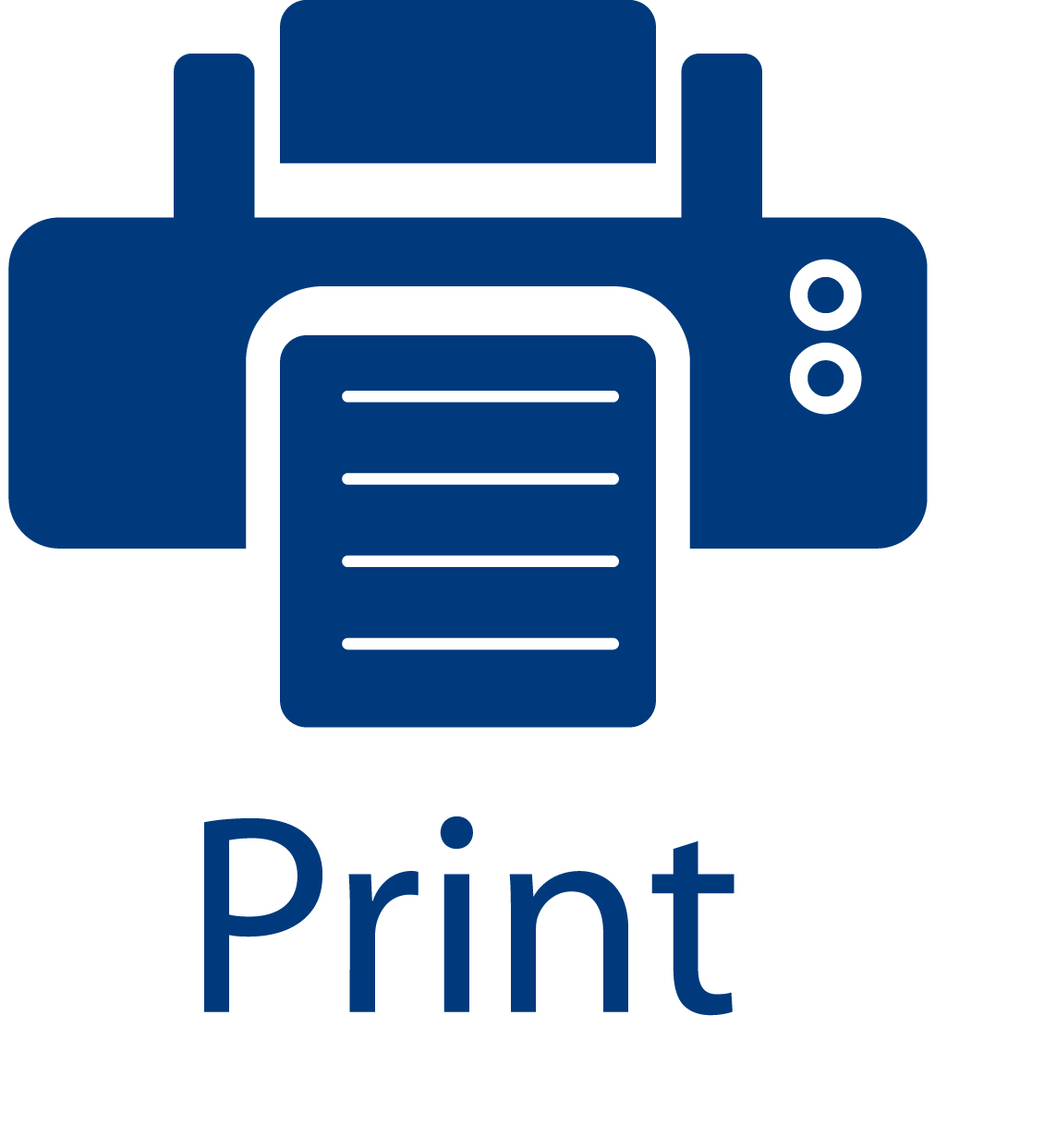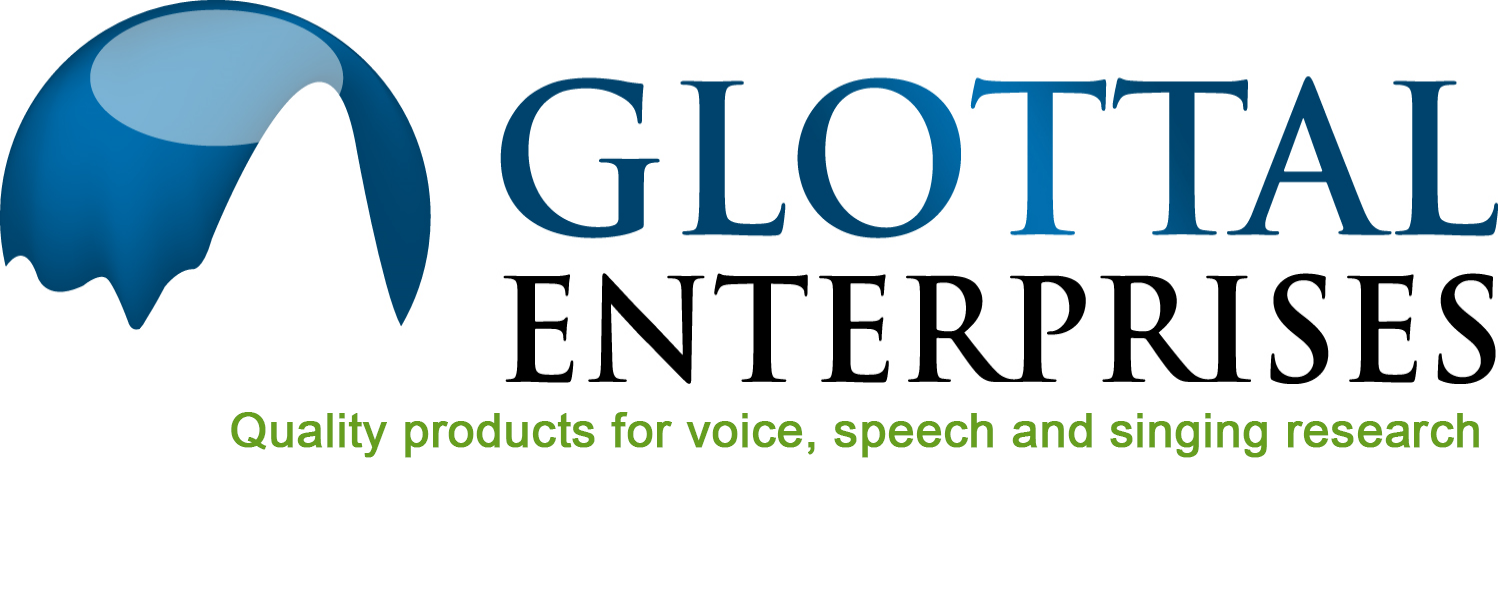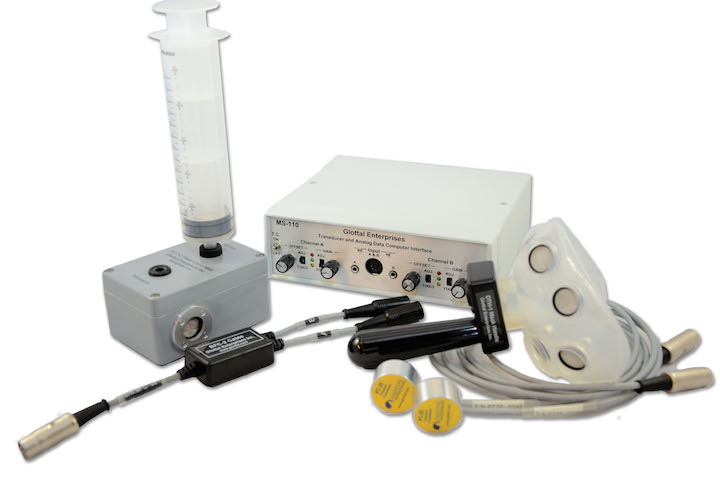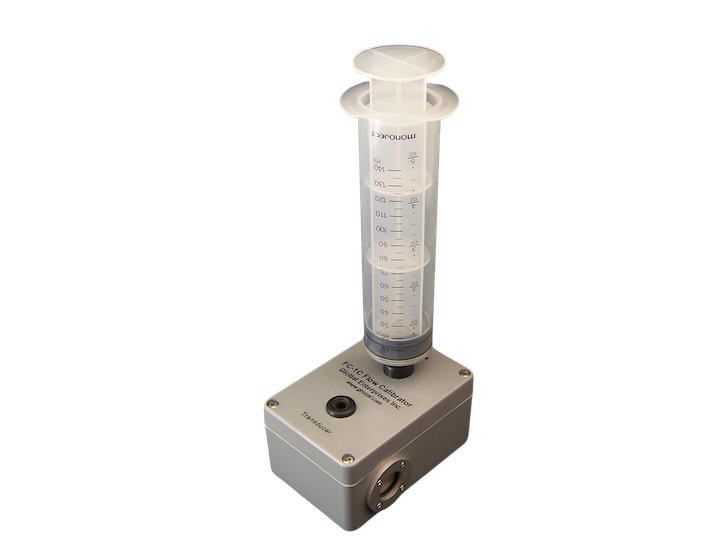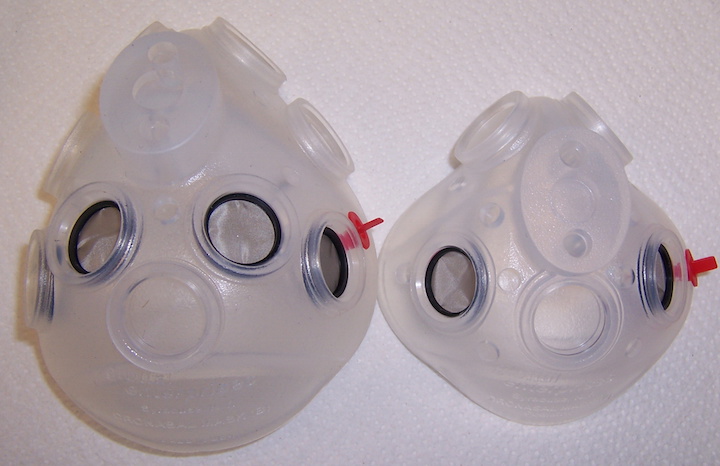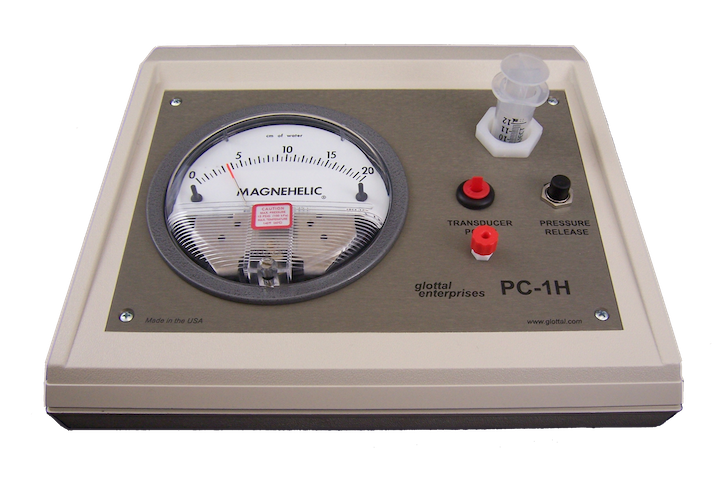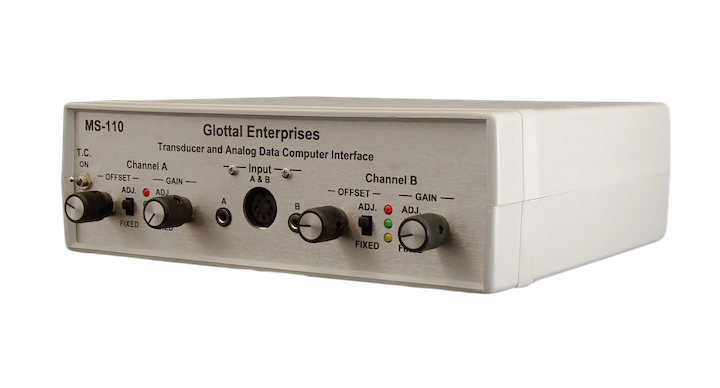- Compatibility with Windows XP/Vista/7/8/10
- Powered by USB or external power supply
- Data automatically saved in standard 2-channel .wav format
- Adjustable gains to accommodate very quiet speech as well as loud singing
- OroNasalRelating to the mouth and nose mask for minimal acoustic distortion
- Two transducers to allow two dual airflow channels from a single mask
- Calculates nasalanceNasalance is a measure of the degree of velopharyngeal opening in voiced speech formed by computing the ratio of the amplitude of acoustic energy at the nares, An, to the amplitudes of the total radiated acoustic energy, at the mouth and nose, Am +An. The term nasalance usually refers to this ratio as a percentage: An/(Am+An)X100 using airflow giving significantly higher accuracy as compared to acoustic nasalanceNasalance is a measure of the degree of velopharyngeal opening in voiced speech formed by computing the ratio of the amplitude of acoustic energy at the nares, An, to the amplitudes of the total radiated acoustic energy, at the mouth and nose, Am +An. The term nasalance usually refers to this ratio as a percentage: An/(Am+An)X100 measurements
This product is for research and teaching purposes only. It is not a medical device. It is not intended to be used in the diagnosis, cure, treatment, mitigation or prevention of disease and it is not intended to affect the structure or function of the body.
| Dual Airflow System Package |
|
| Dual Airflow System Add-on Package (For customers who have purchased Aeroview) |
|
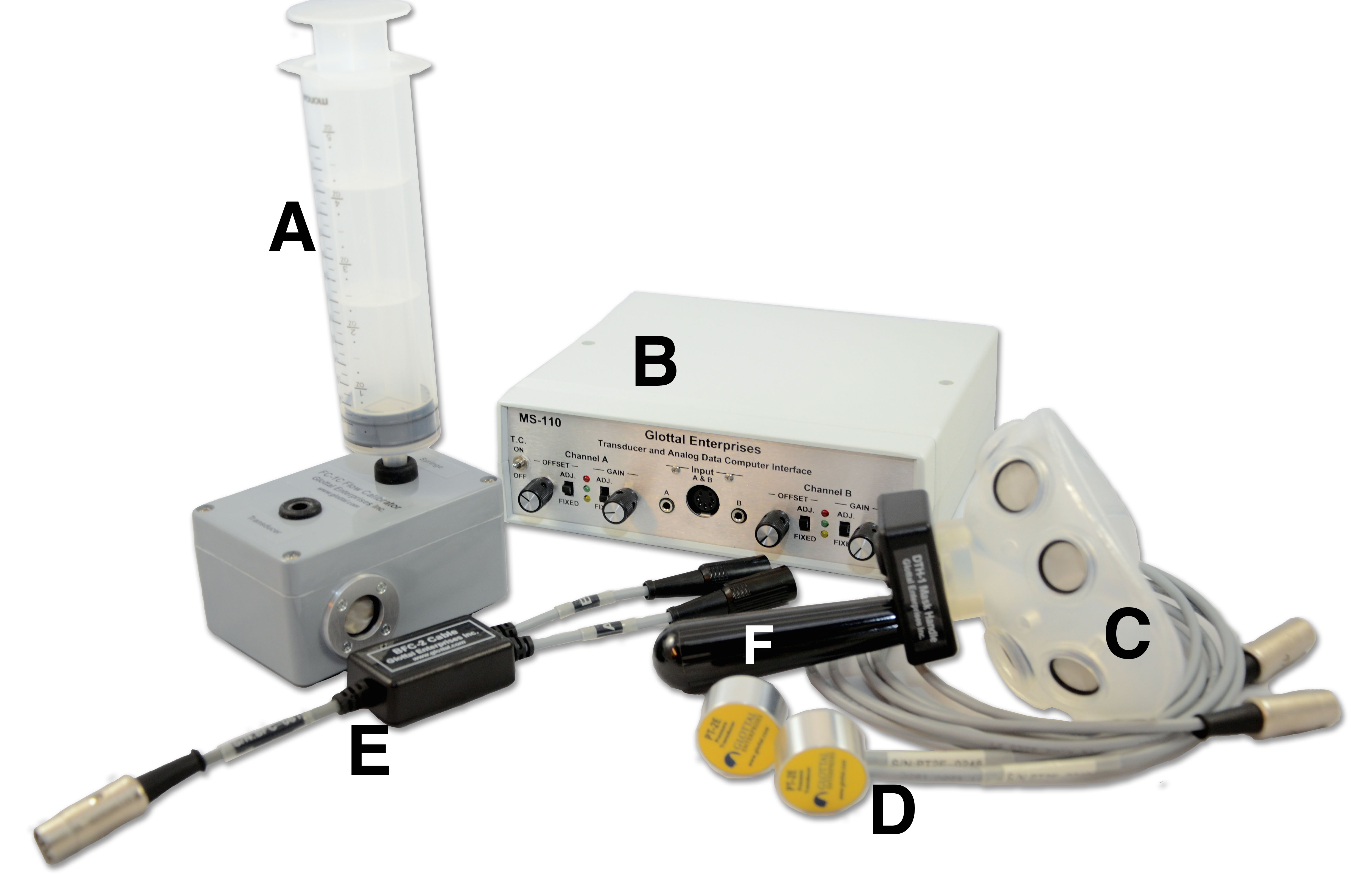
This product is for research and teaching purposes only. It is not a medical device. It is not intended to be used in the diagnosis, cure, treatment, mitigation or prevention of disease and it is not intended to affect the structure or function of the body.
The DC-NasalanceNasalance is a measure of the degree of velopharyngeal opening in voiced speech formed by computing the ratio of the amplitude of acoustic energy at the nares, An, to the amplitudes of the total radiated acoustic energy, at the mouth and nose, Am +An. The term nasalance usually refers to this ratio as a percentage: An/(Am+An)X100 is computed from the low-pass filtered oral and nasal airflows, Odc and Ndc, respectively. Also displayed is a version of the oral airflow that is low-pass filtered at a selectable frequency of 400, 500, or 600 Hz to show a roughly inverse-filtered representation of the glottal airflow waveform. (The oral airflow can also be more precisely inverse filtered using the Waveview program.) This capability is important in measuring Phonation Threshold PressurePhonation Threshold Pressure refers to the minimum level of lung pressure needed to sustain vocal fold oscillation at a specific pitch (PTP).
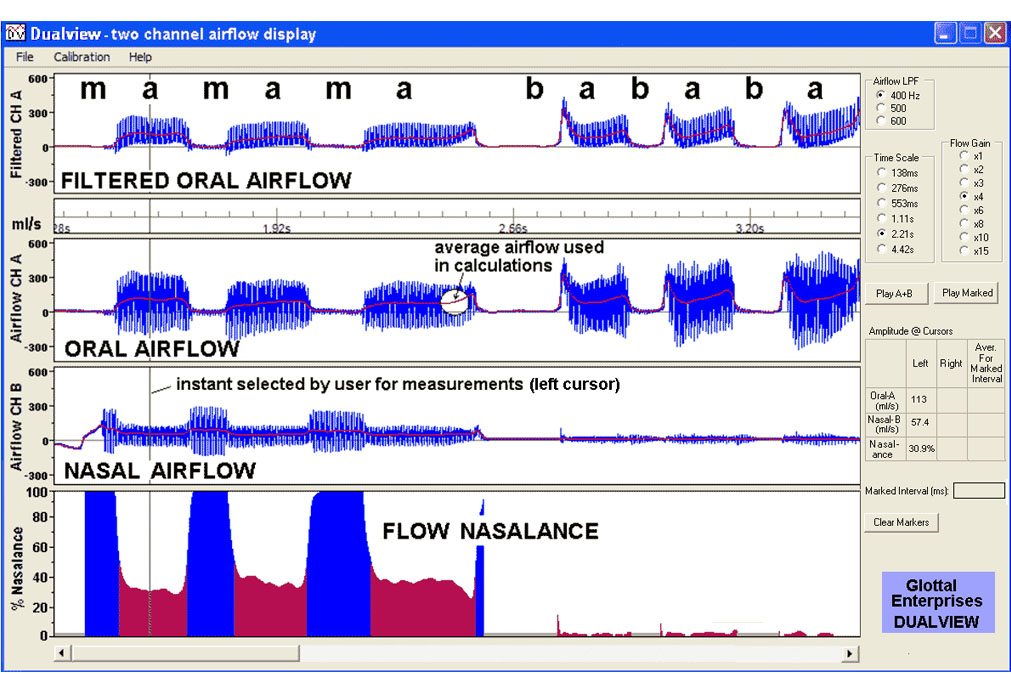
This product is for research and teaching purposes only. It is not a medical device. It is not intended to be used in the diagnosis, cure, treatment, mitigation or prevention of disease and it is not intended to affect the structure or function of the body.
1. How large is the system?
| The system has multiple components and will fit easily on a desk. |
2. Can I use the Aeroview System with my PC? MAC? iPad? Laptop?
| Dualview can be used on a desktop or laptop with Windows XP/Vista/7. Our software cannot be use on iOS, but it should function on a Mac running Windows OS. Tablets and smart phones are not supported. |
3. What kind of files does this system generate?
| Recorded data is saved as WAV files. |
4. How is data recorded? How large?
| Data is sent to the computer via the MS-110 A/D convert USB port. Recorded files are in the 50-500kB range. |
5. Can I use my own DAQ system?
| Yes, by using the analog outputs of the MS-110 to the DAQ system of your choice. |
6. How accurately are airflow and air pressure measured?
| Measurements are within +/- 5%. |
7. Mask hygiene? How do I clean it?
| Our masks are medical grade silicon and can be autoclaved for sterilization. |
8. How do I get replacement or extra parts for my Dualview System?
| All parts can be replaced through Glottal. Consumables such as the OPA tubes, mask plugs, and screen rings can be reordered as needed. |
9. Can it be used on children and infants?
| Yes. Our small mask is suitable for children. |
10. How do I get technical support?
| Call or email Glottal Enterprises and our team of engineers will assist you. |
11. What is the difference between Dualview, Nasometry, and Glottal Enterprises Nasalance Visualization System?
| Nasometers and Glottal Enterprises’ Nasalance Visualization System both measure nasalance acoustically using microphones. Dualview measures nasalance using oral and nasal airflow which is inherently more accurate. |
12. Why is Dualview more accurate than traditional nasometry?
| Because airflow is used instead of sound, the system is entirely immune to sound leakage. Nasalance during a totally denasalized vowel will be at or close to zero, independent of the vowel spoken, since the DC airflow is blocked by the velum. In the acoustic approach, there will be some nasalance recorded because of acoustic crossover and sound passing to the nasal passageway through the closed velum, and the value recorded will vary with the vowel being spoken. Furthermore, it is not dependent on the presence of voicing. |
13. Will the OroNasal mask acoustically distort the voice of my subjects during recording?
| Yes, negligibly (see our sound samples). The Glottal Enterprises OroNasal mask is specifically designed to minimize acoustic distortion which maximizes the intelligibility of the subject’s speech, especially when being recorded by an external microphone. |
14. How many channels of data can this system record?
| The MS-110 can record 2 channels of data. The software presents a third channel—the audio is derived from the airflow data. |
